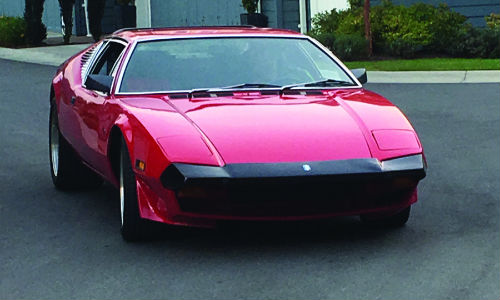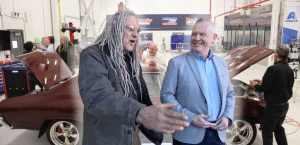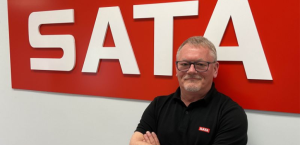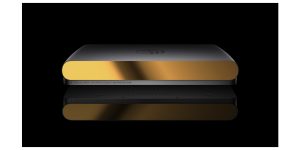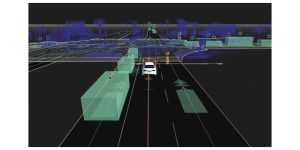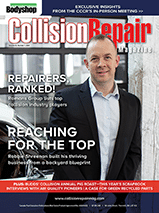By Rick Francouer-November 25, 2016
Perhaps at no time in history have Canadians felt more cash squeezed and house poor. From one end of our country to the other people are searching for ways to augment their income through a second job or moonlighting in an assortment of odd jobs.
As professionals in the automotive industry, we have an advantage in assessing a commodity that Canadians consume in vast numbers: automobiles. We can assess cars at a much higher level than the average consumer, which means we have the ability to spot the diamond in the rough and turn that diamond into something even more valuable: cold, hard, cash.
In my opinion, whether you’re a body tech, mechanic, painter, glass technician or upholsterer you have the skills to “up market” vehicles for profit. Obviously, we all know that x-ray eyes don’t exist so we can’t predict every eventuality hidden beneath paint or undercoating, but as techs, we have a distinct advantage in recognizing hidden gems, fixing what needs to be fixed and flipping the vehicle for profit.
Before we get into specifics, it needs to be mentioned that selling cars is a regulated industry. The rules and regulations for this vary from place to place, so please make sure to check into the local statutes. Very often you can sell only a certain number of cars per year before you need to get an auto dealer license. Always make sure to stay within the law, or you may see all your profits (and more!) disappear under the weight of fines.
Below are some tips to making sure your flip is a profitable one.
1. Pick your car.
Whether it’s an air cooled Porsche, vintage ’30s hot rod, ’60s muscle car or anything in between, do your research on the actual value of whatever car you choose. Don’t let Craigslist or Kijiji be your only guide. I like to first see what the experts at Hagerty.ca are placing the value at, then compare that to prices in your local market. I like the fact that Hagerty’s gives you a low, medium and high price and based on that average you’ll be able to decide if the car your looking at is a potential project. We’re in a global marketplace and high demand vehicles of any era might be best suited for a US or international flip. That’s why I like Hagerty’s so much, they don’t tell you what your collector vehicles is worth on your street, they tell you what it’s worth in the world.
I always follow what I call the rule of three to determine if a car I’m looking at is a good project. Mechanical, bodywork or interior: the car can be in need of two of the three, but not three of three. Most people have done some basic research on the value of the vehicle, and I rarely, if ever run into a situation where the economics of doing all three aspects of the upgrade leave enough profit in the end.
It’s also about mitigating significant investment, because even if you can do one or all of the three trades yourself, investing in the cost of materials can eliminate the project in many cases.
2. Understand your costs.
Luckily, as techs we can eliminate much of the labour expenses by doing the work ourselves, but the reality is that an interior in an investment in materials. Same as paint. Don’t get me wrong, I strongly believe that an interior in a car is the same as a kitchen in a house—a good one in either is the single biggest step to a strong sale. But before buying a project I have a clear understanding of how much, at my cost, is a paint job, an interior, or engine replacement or overhaul. Today, I can walk up to a vehicle and—if it’s a car that I think there is demand for and has up to two aspects needing a refresh—I can do the math to within 5 percent of the final costs.
3. Do a better than average job.
I’ve travelled the world looking at, researching and speaking about car repair and restoration and I can tell you without a doubt, Canadians are known globally for having higher than average expectations about their vehicles. If the car is worth your investment in money and time, put your pride into it and make it a great example of whatever nameplate you’re flipping.
4. Don’t discount a global marketplace.
It is very possible to advertise your vehicle for sale in the US. In some cases it doesn’t require money, but it does take time. Listing on Craigslist on a per city basis is very doable, but make sure you give lots of details and show all aspects of the vehicle in the photo section. Drive it to a nice location and take lots of pics of all parts of the car. Don’t forget to show the straight lines of your bodywork, the underside and the engine compartment. In the write-up include information such as whether you have original manuals, the jack and any history on the car. This is especially important if your target buyer is a real collector. By taking the time to itemize the features and imperfections, you avoid spending a lot of time dealing with what I like to call chicken strokers. Craigslist is fine, but when I’m serious about selling a vehicle, I list it on Hemmings Motor News at hemmings.com. It’s a couple of hundred bucks, and I factor that into my sale price, but it is where true collectors are going to find a car.
Applying these principles, my wife and I recently purchased a 1972 De Tomaso Pantera off the side of the road in a small town on Vancouver Island. We did a quick iPhone check to verify the Hagerty’s pricing, which put the average sale price of the car at $103,000 USD.
The car we were looking at met my criteria; Pantera’s are relatively rare and they appeal to a wide range of collectors including Pantera collectors, exotic collectors, Ford collectors, ’70s era collectors, limited production vehicle collectors and muscle car collectors.
The one we were looking at just needed a refresh, not a rebuild. It met my “three” rule: the mechanical was great (it had a great condition replacement engine, but the original was crated and came with the sale), it needed paint (we straightened the body out and eliminated what rust there was) and a partial interior redo.
I knew looking at it, baring any unforeseen issues, my all-in price, including purchase, taxes, materials and labour would be $70,000.00 CAD. I knew that on top of the sale price, I would have the advantage of the lower Canadian dollar, as it was very probable that the car would sell into the United States in US dollars.
As the owner of 360 Fabrication I have an advantage of having all aspects of the custom side in-house. I put time into planning the production side of each flip from start to finish so that days aren’t lost waiting for parts. This type of planning in key to get your investment, and profit, out in a reasonable time.
If you’re going to be doing the work yourself, factor in the schedule in your purchase decisiom. Is it reasonable to invest ten grand and tie that money up for months, in order to make five grand? Probably not. My ideal timeline is to have the project ready for sale within six weeks.
Good luck with your projects, and for more information please drop me an email at Rick@360Fabrication.com.
Rick Francoeur is the owner of 360 Group of Companies in Abbotsford, British Columbia. 360 is located in a state-of-the-art 22,000 sq. ft. shop that includes CARSTAR Abbotsford, 360 Fabrication and 360 Car Audio and Marine. 360 Fabrication is Canada’s largest custom car builder with an average of 40 projects in production at any given time.


